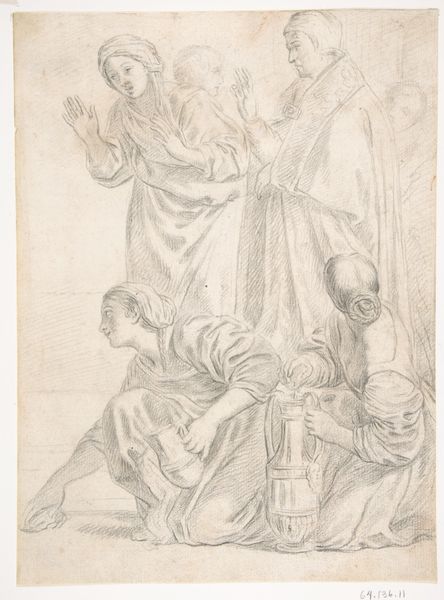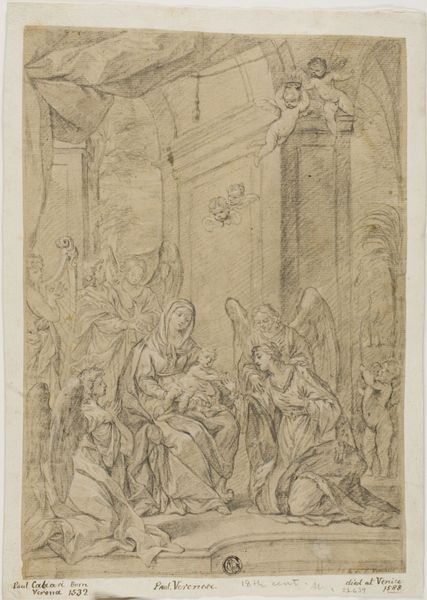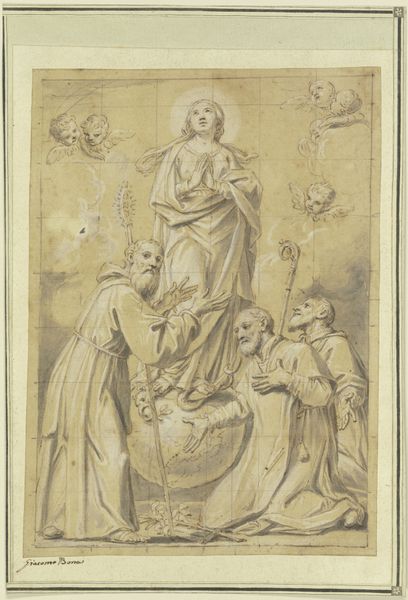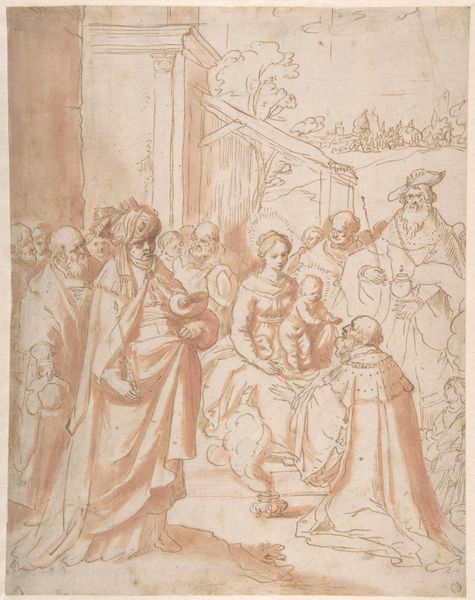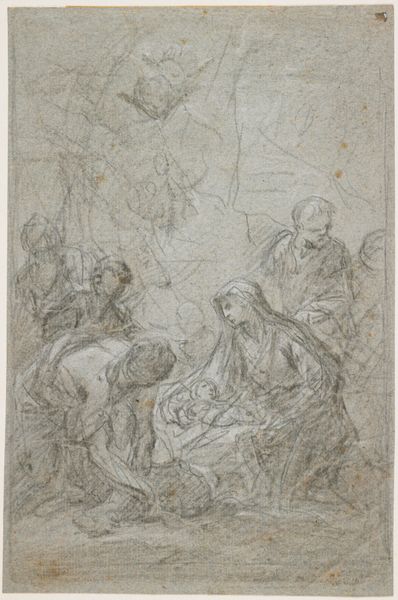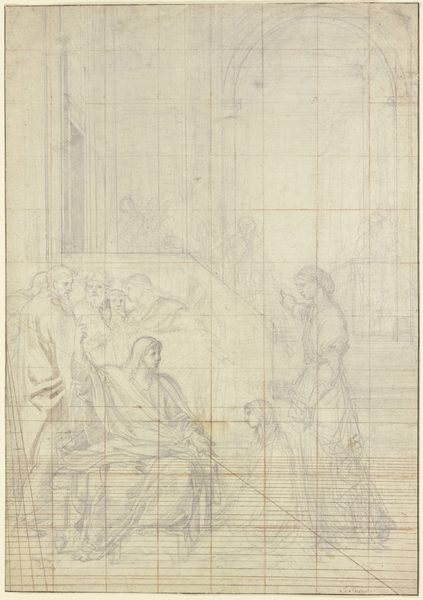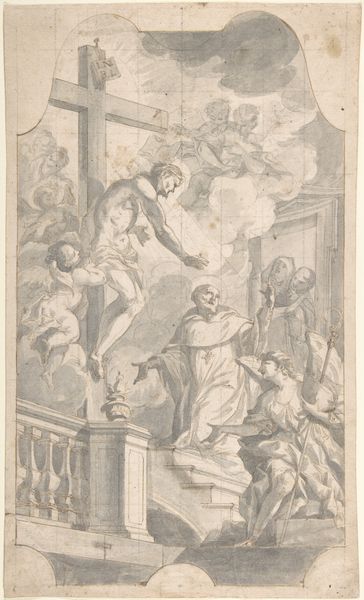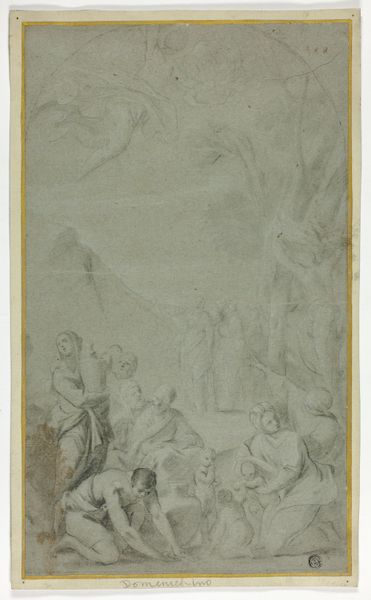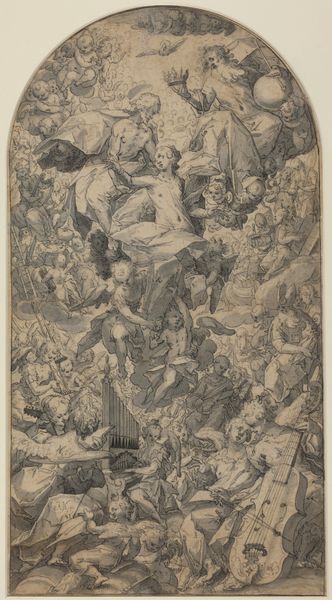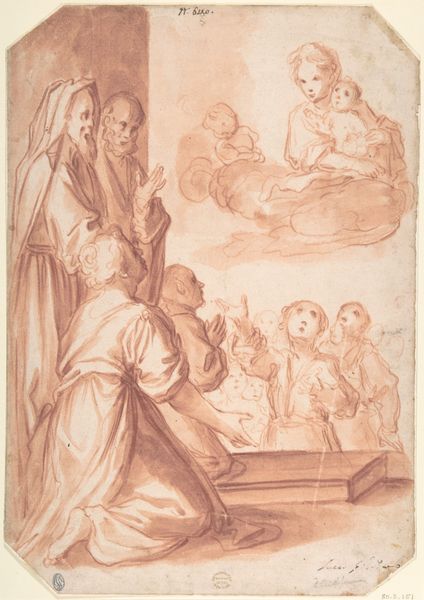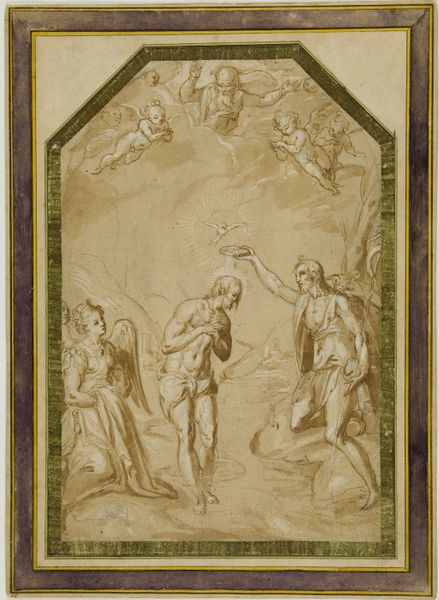
drawing, pencil
#
drawing
#
baroque
#
figuration
#
pencil
#
history-painting
Dimensions: 318 mm (height) x 261 mm (width) (bladmaal)
Curator: Immediately, I'm struck by the swirling dynamism of the composition. There's an ethereal quality to it, like a dream captured in graphite. Editor: Indeed. We're looking at "St Bernard saving the skull of St Caesarius," a drawing attributed to Giovanni Bonati, likely created between 1635 and 1681. It’s currently housed at the SMK, Statens Museum for Kunst. It appears to be rendered primarily in pencil. You can clearly make out the underlying grid that determined the production of this Baroque era artwork. Curator: Yes, the Baroque influence is undeniable. Note the dramatic diagonals, the figures caught in mid-gesture. Bonati masterfully uses light and shadow to create a sense of depth and movement. The interplay between the earthly and the divine is classic Baroque theater. The semiotics of Baroque art suggests that drama will pull you closer to God, making the divine approachable and engaging. Editor: Approaching this drawing from a materialist perspective, the pencil lines show clear decisions in process and layering of pigment and shadow, that it had been rendered using easily obtainable material. One wonders who his assistants may have been? There's clearly an academic rendering style involved, indicating professional creation. This artwork’s focus is also notable; the saving of St Caesarius skull, one that appears not to be directly created in conjunction with labouring lower classes or craft, but a saving by upper-class ecclesiastics instead. Curator: An interesting observation. Looking back to structure; notice how Bonati leads our eye through the scene. From the earthly plane, to the rising figure of Christ amidst billowy clouds. There’s a delicate balance that ties it together, which is reflected also through the relationship between the figures’ various gestures. Editor: Perhaps its intended audience had been well versed with traditional themes and thus required not as much focus on detailed depiction of subjects like laborers, for example, and perhaps only the divine as the focal figure of worship. We need to delve further into the history of the Baroque era to grasp this social setting! Curator: Precisely. Ultimately, it's an intriguing interplay of form and content. Bonati has composed the drawing not merely to convey a story, but also to affect the viewer emotionally and intellectually. Editor: A complex creation in readily accessible material; the production of a narrative from an upper-class context to another of a similar setting. A narrative from the Baroque Era for Baroque’s intended social contexts.
Comments
No comments
Be the first to comment and join the conversation on the ultimate creative platform.
